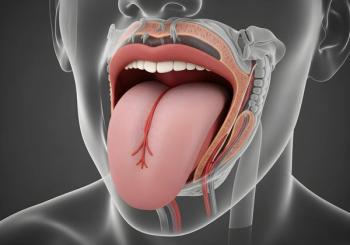
A Potential First-in-Class Treatment Shows Improvement in a Rare Type of Narcolepsy
Key Takeaways
- Oveporexton (TAK-861) is an OX2R-selective agonist showing significant symptom improvement in narcolepsy type 1 patients in phase 3 trials.
- The FirstLight and RadiantLight trials demonstrated statistically significant improvements in wakefulness, cataplexy reduction, and overall disease severity.
Phase 3 trials showed oveporexton effectively treated narcolepsy type 1 by restoring orexin, a neurotransmitter that regulates sleep and wakefulness signaling.
An investigational medication for patients with narcolepsy type 1 in two phase 3 trials met all primary and secondary endpoints, demonstrating statistically significant improvement across a broad range of symptoms. The results of these trials were
Narcolepsy type 1 is a chronic, rare neurological disease caused by the loss of orexin neurons in the brain. Orexin is a neurotransmitter that regulates sleep and wakefulness. Its loss can result in excessive daytime sleepiness and cataplexy, a sudden loss of muscle.
Oveporexton (TAK-861) is an orexin receptor 2 (OX2R)-selective agonist, and it selectively stimulates the OX2R to restore signaling and address the underlying orexin deficiency. Developed by Takeda, oveporexton is an oral drug given twice a day.
The results of two trials, FirstLight and RadiantLight, bring “us a major step closer to having the first orexin therapy that addresses the underlying cause of narcolepsy type 1 — with the potential of transforming the current treatment paradigm,” Emmanuel Mignot, M.D., Ph.D., principal investigator for the FirstLight phase 3 study, said in a
The FirstLight trial enrolled 168 patients, and those who received oveporexton were split between two groups: 1 mg twice a day (61 patients) and 2 mg twice a day (66 patients) for 12 weeks. The RadiantLight trial enrolled 105 patients, with those who received oveporexton receiving only the 2 mg twice a day for 12 weeks. More than 95% of patients completed the placebo-controlled study and enrolled in the long-term extension trial.
The primary endpoint in both studies was the maintenance of wakefulness test (MWT), which is used to measure how alert people are during the day. Secondary endpoints included other tests, such as Epworth sleepiness scale (ESS), where patients assessed their own daytime drowsiness; the weekly cataplexy rate (WCR), which measure the frequency of cataplexy attacks; the narcolepsy severity scale (NSC-CT), a patient questionnaire about common narcolepsy systems.
In both studies, oveporexton was shown to result in statistically significant and clinically meaningful improvement in objective wakefulness (the maintenance of wakefulness test) and the 2 mg dose in both trials was able to normalize sleep latency in 64% of patients.
On the Epworth sleepiness scale, 85% of patients taking the 2 mg dose achieved scores comparable with placebo. Additionally, oveporexton demonstrated statistically significant and clinically meaningful reduction in cataplexy events compared with placebo, as well as in overall disease severity compared with placebo. About 67% of patients showed meaningful improvement in disturbed nighttime sleep.
There were no serious treatment-related adverse events, and the most common treatment-related adverse events were insomnia and urinary frequency and urgency. About 70% of those who experienced insomnia saw this resolve within the first two weeks of treatment. There was no evidence of hepatotoxicity.
Takeda officials indicated they plan to begin U.S. and global regulatory submissions sometime in fiscal year 2025, which for Takeda ends on March 31, 2026. Company officials in a presentation to investors said despite current treatments for narcolepsy, there is a need for new treatments. About 80% of patients have reported residual symptoms despite treatment.
Company officials suggest that oveporexton could achieve peak sales of between $2 billion and $3 billion.
Newsletter
Get the latest industry news, event updates, and more from Managed healthcare Executive.



















































